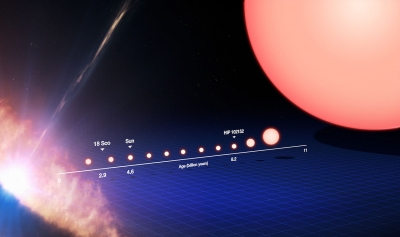How did scientists estimate Sun’s age?

The Sun's age
Scientists say our Sun is four-and-a-half billion years old but how did they estimate its age?
To predict the age of the Sun, scientists looked at the age of the whole solar system because it all came together around the same time.
To find out the solar system's age, scientists looked for the oldest things they could find. And, Moon rocks, meteorites and Earth rocks worked perfectly well for this. Scientists extensively studied these objects, and after much research came to the conclusion that each of the objects were approximately four and- A-half billion years old, and hence, the Sun is likely to be of the same age.
How long will it shine?
Now that we know how old the Sun is, how much longer will it shine upon us?
Scientists believe that stars such as our Sun usually burn for about nine or 10 billion years. This means our Sun is halfway through its life and will last for another five billion years at least.
Once five billion years are up, the Sun will become a red giant. The Sun will become bigger and cooler at the same time and it will be a lot different than the Sun we know today. As a red giant our Sun will become 2,000 times brighter than it is now. Wonder what would happen to our solar system at that time - will there be new life?
Picture Credit : Google
